Hi Guys,
Cyrus arm-twisted me into this one when it popped up. It's a very rare accessory and a neat one to handle. This one was unfortunately ground dug, so very relic-y, but mostly complete and still had the optics present-- it was also a very small fraction of what the last one went for at auction ($18,400 in 2015). The mirrors are very deteriorated, cloudy and unusable, but cool that they survived this long. I believe the stock is a very old purpose-built repro using the old metal hardware from the original. The trigger group functions well.
E. Leitz of Wetzlar was the contractor selected for production for Prussia, though Storz does have pictures of a different model produced for Bavaria (the Bavarians strongly favored domestic production where possible). Storz further mentioned that 10,000 units were ordered for trial purposes by the Prussian War Ministry. The idea of these devices was to allow a soldier to fire from the (relative) safety of their trench. The rifle could rest on a parapet/sandbag, or I've seen a tripod used for support. The periscope would provide a view of the rifle's sight picture, allowing the soldier to take aim. Firing this was rather primitive process; the trigger would be connected to the lower trigger group with a small chain or some wire. When the soldier pulled the trigger, the rifle would fire. On the original design, the rig would then need to be lowered and the bolt manually cycled. This was not very efficient or handy to say the least.
Improvements were made, such as enclosing the optics to prevent fogging. Even more importantly, some later iterations had an additional lever device for cycling the bolt. An example of this type can be found in the Royal Armouries in the UK:

 collections.royalarmouries.org
collections.royalarmouries.org
In any case, this one is far from perfect, but I enjoyed handling it and it looks good hanging on a wall with some of my other accessories.
While I was at it, I couldn't resist a shot of one of my rifles sitting in the device.
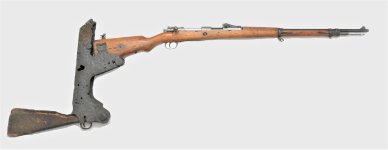
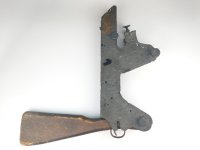
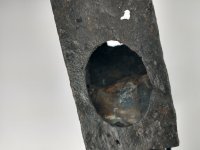
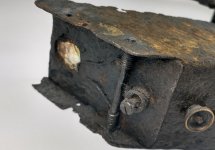
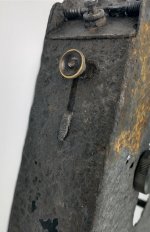
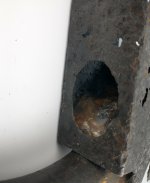
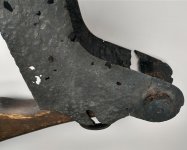
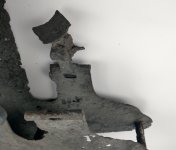
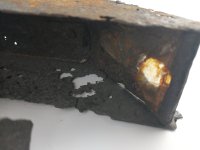

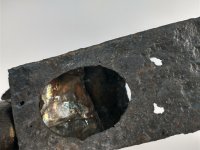
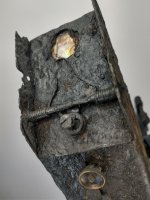
Source: Storz, D., & Rest, S. (2006). Rifle & Carabine 98. Verlag Militaria.
Cyrus arm-twisted me into this one when it popped up. It's a very rare accessory and a neat one to handle. This one was unfortunately ground dug, so very relic-y, but mostly complete and still had the optics present-- it was also a very small fraction of what the last one went for at auction ($18,400 in 2015). The mirrors are very deteriorated, cloudy and unusable, but cool that they survived this long. I believe the stock is a very old purpose-built repro using the old metal hardware from the original. The trigger group functions well.
E. Leitz of Wetzlar was the contractor selected for production for Prussia, though Storz does have pictures of a different model produced for Bavaria (the Bavarians strongly favored domestic production where possible). Storz further mentioned that 10,000 units were ordered for trial purposes by the Prussian War Ministry. The idea of these devices was to allow a soldier to fire from the (relative) safety of their trench. The rifle could rest on a parapet/sandbag, or I've seen a tripod used for support. The periscope would provide a view of the rifle's sight picture, allowing the soldier to take aim. Firing this was rather primitive process; the trigger would be connected to the lower trigger group with a small chain or some wire. When the soldier pulled the trigger, the rifle would fire. On the original design, the rig would then need to be lowered and the bolt manually cycled. This was not very efficient or handy to say the least.
Improvements were made, such as enclosing the optics to prevent fogging. Even more importantly, some later iterations had an additional lever device for cycling the bolt. An example of this type can be found in the Royal Armouries in the UK:

Trench periscope (Spiegelkolben) with auxiliary bolt, for overhead fire, for the Mauser Gewehr 98 rifle - Arms of the First World War - Royal Armouries collections
Development The threat of succumbing to a sniper's bullet was a reality for all who inhabited the trenches of the First World War. Keeping one's head below the line of sight was essential. In order to see out of a
In any case, this one is far from perfect, but I enjoyed handling it and it looks good hanging on a wall with some of my other accessories.
While I was at it, I couldn't resist a shot of one of my rifles sitting in the device.












Source: Storz, D., & Rest, S. (2006). Rifle & Carabine 98. Verlag Militaria.
